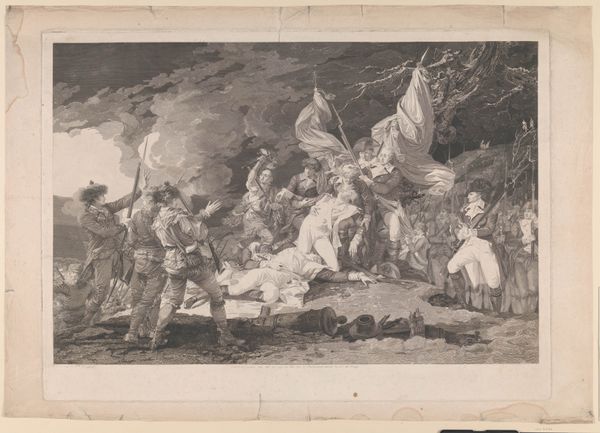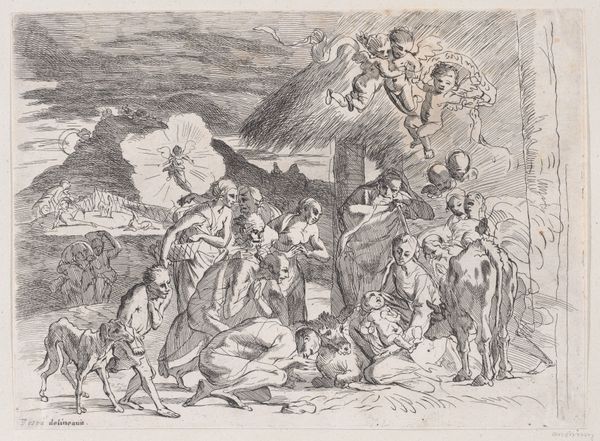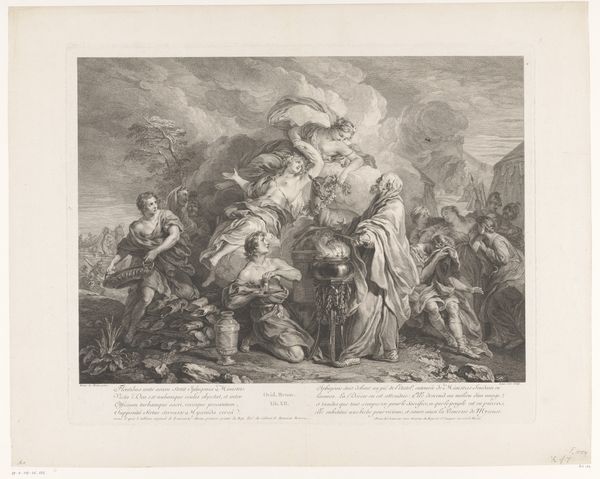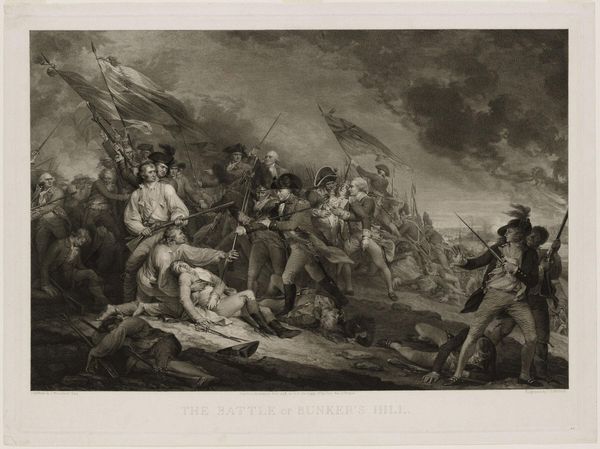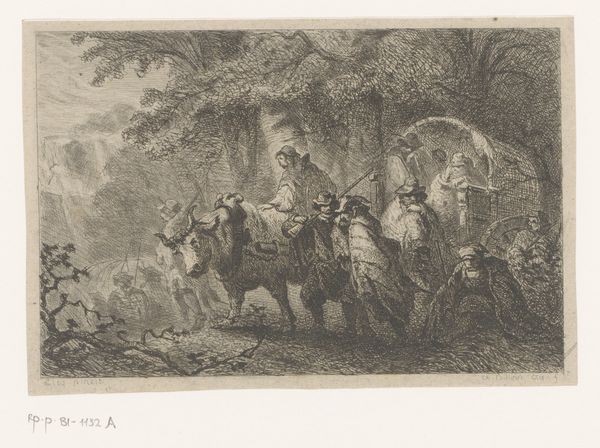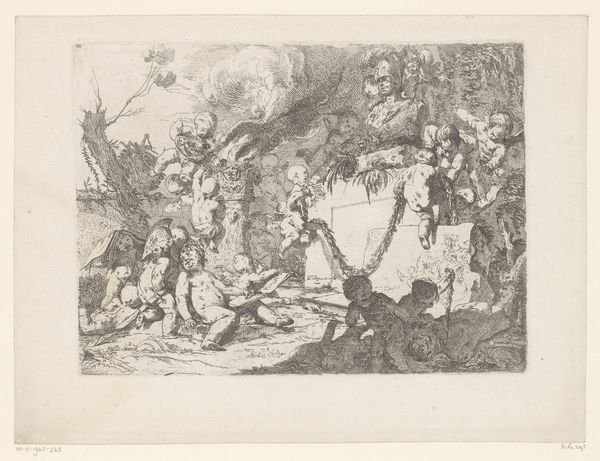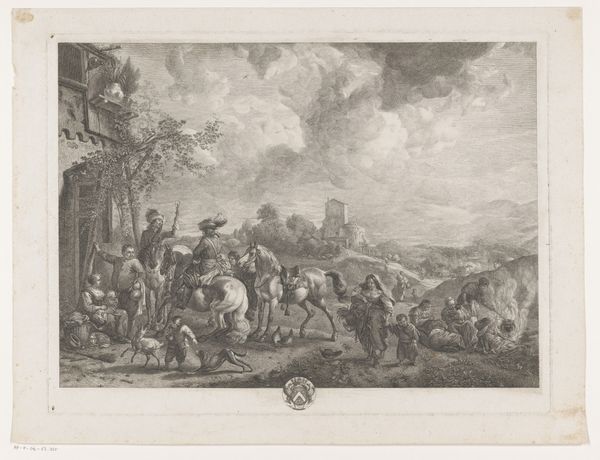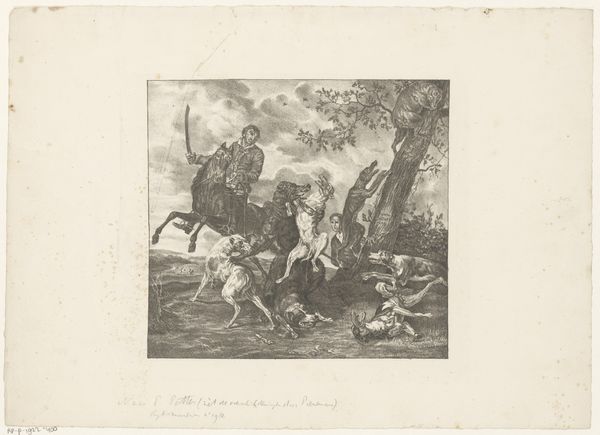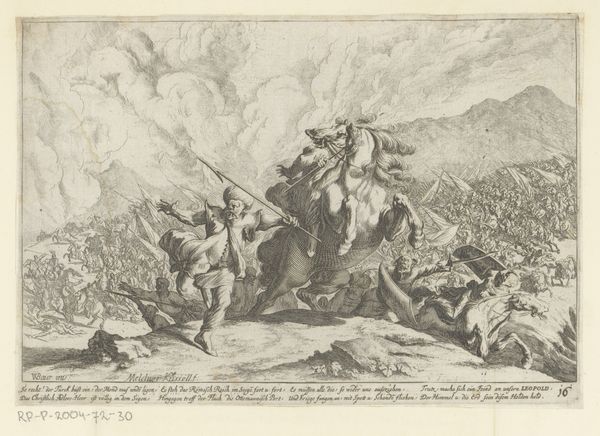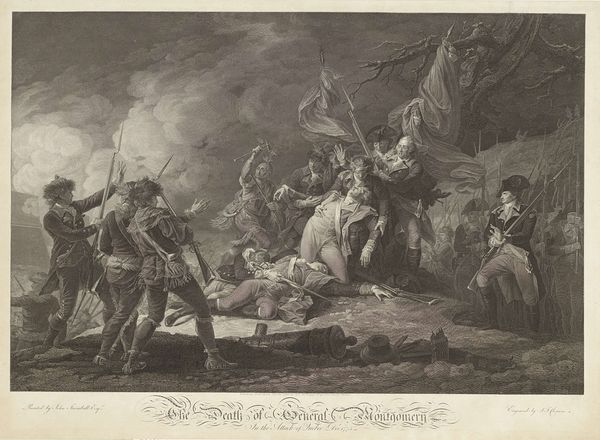
print, engraving
#
narrative-art
# print
#
figuration
#
romanticism
#
history-painting
#
engraving
Dimensions: 585 mm (height) x 801 mm (width) (plademaal)
Curator: This engraving by J.F. Clemens, created between 1791 and 1795, is titled "General Montgomery's Death." It resides here with us at the SMK, Statens Museum for Kunst. A print rendered in tones of gray, it captures a rather dramatic, perhaps propagandistic scene. Editor: The composition immediately struck me. The gray palette contributes to the overall somber, smoky atmosphere. It evokes a strong sense of loss and turmoil, even before one understands the subject matter. I see the theatrical composition style popular in romanticism. Curator: Indeed. Observe how Clemens employs classic Romantic visual language—the billowing flags, the dramatic sky, and the very deliberately arranged bodies. The iconography is quite loaded. Flags serve as symbols of patriotic fervor, and the fallen hero being supported by his fellows creates a very obvious martyr image. Notice the poses of the surrounding figures as well. Editor: Looking at the details more closely, I'm curious about the implied political message embedded here. The death of a general certainly can galvanize support, or serve to rewrite history and re-shape a particular set of values. What do you make of this presentation of war, violence, and the glorification of a single death? Curator: The artist would be well aware of his viewership's perception. Visual language creates continuity, an unbroken lineage, if you will, connecting Montgomery's sacrifice with larger themes of valor and national destiny. Observe the details: the clothing of the soldiers, even the landscape features, reinforce that very specific cultural milieu of late 18th-century nationalism. These aren't simply people, they are figures laden with historic memory. Editor: But whose memory is perpetuated here? Is this narrative inclusive of all who fought, of the marginalized? The focus seems overwhelmingly on a heroic, individualized death, overshadowing the collective experiences and the more nuanced, less glamorous aspects of war. Curator: Well put. Art can be powerful propaganda indeed, solidifying the established story over more difficult ones. Perhaps its continuous impact lies in prompting these crucial questions. Editor: Exactly. I think, at the end of the day, these images urge us to think more deeply about whose stories are considered worth telling.
Comments
No comments
Be the first to comment and join the conversation on the ultimate creative platform.
